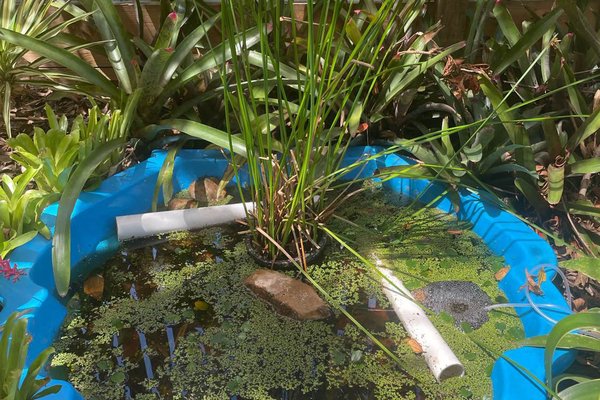The language of frogs: what are your backyard frogs saying?

Orange-thighed Tree Frog (Litoria xanthomera), QLD.
Image: Jodi Rowley© Jodi Rowley
The calls of frogs are a familiar noise from backyards to the bush, but what is a frog call? From love songs to battle cries, frogs use vocal communication to find mates, fight over territory, and cry for help. Each frog species has a unique call, but that call can differ place to place- like human accents! The national citizen science project led by the Australian Museum and based on recording frog calls, FrogID is enabling the first continental-scale understanding of how much frog calls vary within species.

Floodplain (Uperoleia inundata), NT.
Image: Jodi Rowley© Australian Museum
Most of the calls you hear (and hopefully are recording with the FrogID app!) are male frogs singing a sweet love song to attract female frogs. Frogs of most species lay their eggs in water, so males of most species position themselves near a pond or stream and call to advertise to female frogs that they’ve found water and are waiting! This advertisement call is unique to each species, so you can identify the species of frog calling just by listening to their love songs.
However, you may occasionally hear frog calls that don’t sound like their usual love songs. In fact, frogs are capable of making several other types of calls. For example, when several male frogs are singing their love songs from the same water body, they may include a warning call, or “battle cry” as the final verse of their love song. This territorial call warns other males to keep their distance, and not encroach on their great calling spot. When a male frog puts so much energy into his love song, he wants to make sure he’s heard and that swooning females know he’s the one singing. He also wants to defend his territory, which might be somewhere especially good to lay eggs.

Red Tree Frog (Litoria rubella), NSW.
Image: Jodi Rowley© Australian Museum
Another type of frog call is prompted when male frogs are so amorous that they try to mate with any nearby frog, including other males or females that have already bred! When this happens, the uninterested frog will make a release call to communicate to the overzealous male to let go and not waste his time. Finally, just like any animal, when predators attack, frogs scream. This distress call may also stun the predator, enabling the frog to escape.
While only male frogs make advertisement and territorial calls, both males and females are capable of making release or distress calls. However, only the advertisement call is useful in identifying what species of frog is calling, as each species has its own unique “love song.”
But, what about a love song to a different tune? While advertisement calls are overall very similar within a species, the advertisement call of each species may vary a little due to things like body size and weather. Larger frogs are likely to have deeper calls, and warmer weather enables frogs to call faster.

Broad-palmed Frog (Litoria latopalmata), NSW.
Image: Jodi Rowley© Jodi Rowley
In addition to varying with body size and weather, frog calls also likely vary from place to place, just like human accents do. However, there has been very little research on how variable frog advertisement calls are. The FrogID project has, for the first time, created an emormous database of frog calls from across Australia. Thanks to all the recordings submitted to the project, we can now gain an understanding of the geographic variation of frog calls across Australia! In my research, I get to listen to thousands of frog love songs and measure their characteristics so that we can determine just how strong Australian frog accents are across their range!
So, don’t be surprised if what you hear in your backyard or in the bush doesn’t perfectly match the advertisement call examples on the FrogID app. Frogs have several call types, situationally change their tune, and may have accents that vary geographically! Please keep recording and submitting those frog calls through the FrogID app to help us further understand Australian frogs!
Savannah Weaver
Undergraduate student, Bucknell University (USA), Australian Museum Research Institute & UNSW Sydney.













